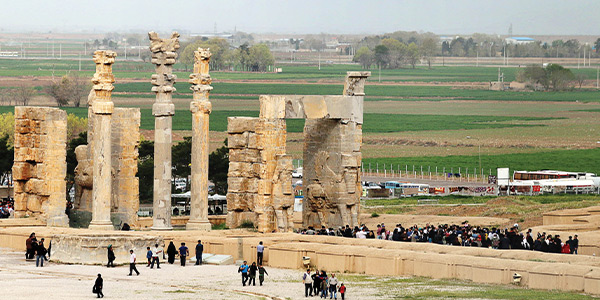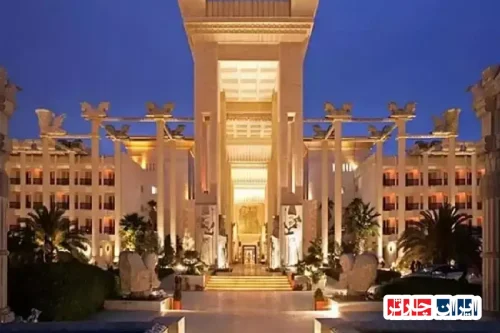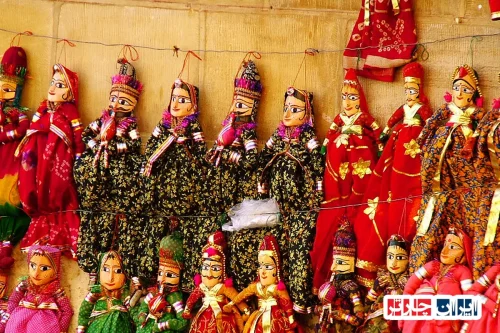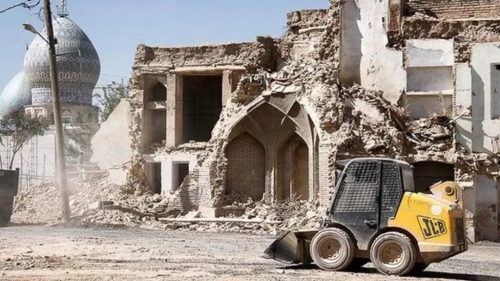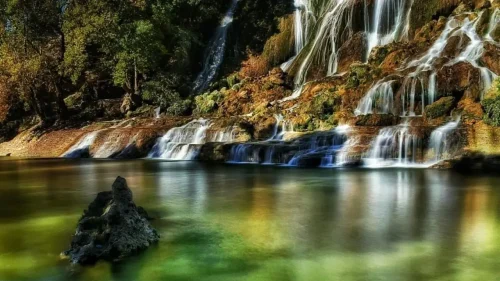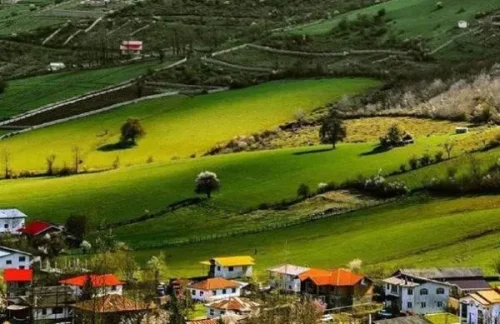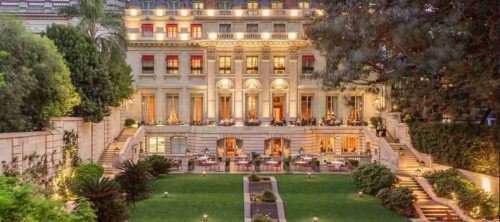Persepolis Shiraz: Spectacular Remains of Achaemenid History
Persepolis Shiraz, a spectacular remnant of Achaemenid history, is one of the most important and ancient historical sites in Iran. It not only symbolizes the splendor and greatness of the Achaemenid era, but also holds a special place as a prominent cultural and tourist icon, attracting both domestic and foreign tourists alike. Known also as Parseh and Persepolis, this historic complex is located near Shiraz in Fars Province, captivating visitors with its unparalleled architecture and magnificent structures. is among the sites that draw thousands of visitors from around the world to Iran each year.
Throughout history, Persepolis Shiraz has played an important role as the ceremonial capital of the Achaemenid Empire. The complex includes palaces, halls, columns, and various historical buildings, each with its own unique stories and secretsis not only significant architecturally but also culturally, showcasing the high art and skill of the craftsmen of that era.
Visiting Persepolis Shiraz offers a unique opportunity to learn about Iran’s history and provides an unforgettable experience of the grandeur of the Achaemenid Empire. This site, with its comprehensive information and numerous attractions, offers an educational and enjoyable experience for all enthusiasts of Iranian history and culture. is a must-visit for any tourist.
Nestled in a beautiful and lush environment, Persepolis Shiraz facilitates diverse tourism tours. Reputable travel companies like Iran Charter ensure a seamless experience for visitors with perfect services. These services include expert guidance, reliable transportation, and accommodation in nearby hotels, ensuring tourists have the best experience while visiting
Overall, Persepolis Shiraz is not only a historical pride but also a major tourist destination that combines history, culture, and natural beauty. Visiting this site is an opportunity for all who seek to gain a deeper understanding of Achaemenid civilization and enjoy the natural beauty of Iran. Travel companies such as Iran Charter provide top-notch services, guaranteeing your visit to will become an unparalleled and enjoyable experience.
History of Persepolis in Shiraz: A Symbol of the Achaemenid Empire’s Grandeur
The Beginning of Construction and Historical Significance
Persepolis in Shiraz is one of the most important ancient sites in Iran, built during the Achaemenid Empire. This historical complex served as the ceremonial capital of the Achaemenid Empire, playing a significant role in demonstrating the grandeur and magnificence of this dynasty. The construction of this vast complex began during the reign of Darius the Great and continued up to Xerxes’ era.
The Role of Persepolis in the Achaemenid Empire
Persepolis was not only the administrative and management center but also a symbol of Achaemenid power and culture. With its unparalleled architecture and magnificent buildings, it reflects the high level of technology and craftsmanship of its builders. Additionally, it was used as a venue for significant imperial celebrations and ceremonies.
Different Sections of the Persepolis Complex in Shiraz
Gate of All Nations
The Gate of All Nations is one of the most crucial parts of Persepolis, serving as a grand entrance for representatives from various nations of the Achaemenid Empire. With its massive columns and beautiful inscriptions, this gate represents the cultural and ethnic diversity of the empire.
Apadana Palace
Apadana Palace is known as one of the most beautiful and magnificent palaces of Persepolis. With its tall columns and precise stone decorations, it was an ideal place for receiving the empire’s nobles and hosting important ceremonies.
The Cultural and Touristic Importance of Persepolis
Unique Cultural Heritage
Persepolis in Shiraz is significant not only historically but also culturally. With its artworks and architecture, it represents the culture and civilization of the Achaemenids and plays a vital role in preserving Iran’s national identity.
An Attraction for International Tourists
Being listed as a UNESCO World Heritage site, Persepolis is one of the most significant tourist destinations in Iran. It attracts thousands of domestic and international tourists annually, contributing significantly to the country’s tourism industry.
Unique Architecture and Engineering of Persepolis
Grand Columns
The columns of Persepolis, with their large dimensions and unique design, showcase the high skills of Achaemenid engineers. These columns not only provided a solid structure for the buildings but also enhanced the architectural beauty of the complex.
Intact Structures and Inscriptions
The structures of Persepolis, with their detailed and beautiful inscriptions, offer valuable insights into the history and culture of the Achaemenids. These inscriptions contain important stories and narratives that aid in a better understanding of the civilization of that era.
Access and Visiting Information for Persepolis in Shiraz
Various Access Routes
Access to Persepolis in Shiraz is possible via the Marvdasht-Saadat Shahr highway. Visitors can reach the historical complex by private car, charter taxi, or reputable tour agencies such as
Visiting Hours and Regulations
Persepolis in Shiraz is open every day from 8 AM to 5 PM. Visitors must abide by the regulations regarding carrying items and safety precautions to ensure a peaceful and enjoyable visit.
Tourist Services and Facilities Near Persepolis
Nearby Hotels and Accommodations
There are various hotels near Persepolis in Shiraz where tourists can stay. These hotels, with their comfortable amenities and high-quality services, provide a pleasant experience for visitors.
Tour Services and Irancharter Offerings
offers diverse tours and impeccable services, making visiting Persepolis in Shiraz convenient and comfortable for tourists. These services include specialized guides, reliable transportation, and accommodations in nearby hotels.
Annual Visitor Numbers and the Economic Impact of Persepolis
Tourism Boost and Local Economy
Persepolis in Shiraz, with its high domestic and international tourist turnout, plays a crucial role in boosting the tourism industry and local economy of Fars province. The increase in visitor numbers leads to higher economic revenues and the creation of job opportunities in the region.
Cultural and Social Impacts
History and culture enthusiasts gain a deeper understanding of Iran’s national identity by visiting Persepolis. This historical site also fosters cultural interaction and knowledge exchange among nations.
Comparing Persepolis with Other Achaemenid Sites
Persepolis and Other Sites
Both Persepolis and other Achaemenid sites are ancient relics of the Achaemenid Empire, each with its unique features. While Persepolis is more recognized as a ceremonial and cultural center, other sites might serve administrative or military purposes.
The Importance of Both Sites in Iranian History
Both Persepolis and other Achaemenid sites showcase the grandeur and magnificence of the Achaemenid Empire and play a crucial role in preserving and transmitting Iranian culture to future generations. As symbols of Iran’s cultural and historical heritage, they are recognized globally.
Tourist Tours and Offers from Reputable Companies for Visiting Persepolis
Specialized Tours from Iran Charter
offers specialized and well-planned tours to make visiting Persepolis in Shiraz easy for tourists. These tours include professional guidance, visits to nearby attractions, and suitable accommodations for travelers.
Special Offers and Discounts
Reputable travel companies like provide special discounts and economical packages, offering a great opportunity for enthusiasts to visit Persepolis at a more affordable cost. These offers help tourists enjoy the historical site’s beauty at a more reasonable price.
Looking to the Future and Preservation of Persepolis in Shiraz
Protective and Maintenance Measures
As a UNESCO World Heritage site, Persepolis in Shiraz is always under meticulous care. Specialized teams, using advanced technologies, play an essential role in preserving and maintaining this historical site so that future generations can benefit from this valuable heritage.
Challenges and Solutions
Preserving Persepolis in Shiraz faces challenges such as natural and human-induced damages. Tourism companies and cultural organizations collaborate, providing solutions to confront these challenges and striving to preserve this valuable heritage forever.
The Role of Tourism in Regional Development with Visits to Persepolis
Job Creation and Economic Development
Persepolis in Shiraz, by attracting domestic and international tourists as a unique tourist attraction, creates numerous job opportunities in the region. These opportunities include tour guides, hotel staff, and handicraft vendors, contributing to the region’s economic prosperity and enhancing the local population’s living standards.
Contact Information for Iran Charter
For more information about tours and services of Iran Charter, you can contact them at 02191091190 or email at info@irancharter.ir.
Frequently Asked Questions
- Where is Persepolis located?
- Persepolis, also known as Takht-e Jamshid, is located in Fars Province, near the city of Marvdasht, approximately 70 kilometers northeast of Shiraz.
- In which period was Persepolis built?
- Persepolis was built during the Achaemenid Empire, in the reign of Darius the Great.
- Who played a significant role in the construction of Persepolis?
- Darius the Great, the ruler of the Achaemenids, initiated the construction of Persepolis, and Xerxes was the last Achaemenid ruler to complete it.
- Why is Persepolis historically significant?
- Persepolis holds historical significance due to its role as the ceremonial capital of the Achaemenid Empire, its display of the architectural and artistic achievements of the era, and as one of the largest ancient structures globally.
- How was Persepolis destroyed?
- Persepolis was destroyed by a fire set by Alexander the Great towards the end of the 4th century BC.
- Has Persepolis been restored?
- Yes, some parts of Persepolis have been restored to aid in preserving the ancient artifacts, though many parts remain in their original semi-complete state.
- Which parts of Persepolis still remain?
- Sections such as the Gate of All Nations, Hall of Hundred Columns, Apadana, and seating areas are still standing, and visitors can explore them.
- What are the architectural features of Persepolis?
- Persepolis features tall and beautiful columns, stone reliefs, curved roofs, and large spaces, exemplifying ancient Achaemenid architecture.
- What conditions must be observed for visiting Persepolis?
- Visitors must purchase an entry ticket, wear appropriate clothing for weather conditions, and respect the site’s regulations and historical preservation rules.
- What are the visiting hours for Persepolis?
- Persepolis is open for visits from 8 AM to 5 PM, but hours may change under special circumstances.
- How can I reach Persepolis?
- Visitors can reach Persepolis by driving from Shiraz, taking a private taxi, intercity minibuses, or travel tours.
- Where are the nearest hotels to Persepolis?
- No specific accommodations exist near Persepolis, but staying in Shiraz and traveling to the site by public transport or taxi is possible.
- Is there guidance available when visiting Persepolis?
- Yes, local guides and tour services are available to assist visitors with navigation and historical context during their visit to Persepolis.
- What are the main sections of Persepolis?
- The key sections of Persepolis include the Gate of All Nations, the Hall of Hundred Columns, Apadana, and the artistic and cultural areas.
- What are UNESCO’s reports about Persepolis?
- Persepolis is listed as a UNESCO World Heritage site due to its historical, cultural, and architectural significance.

